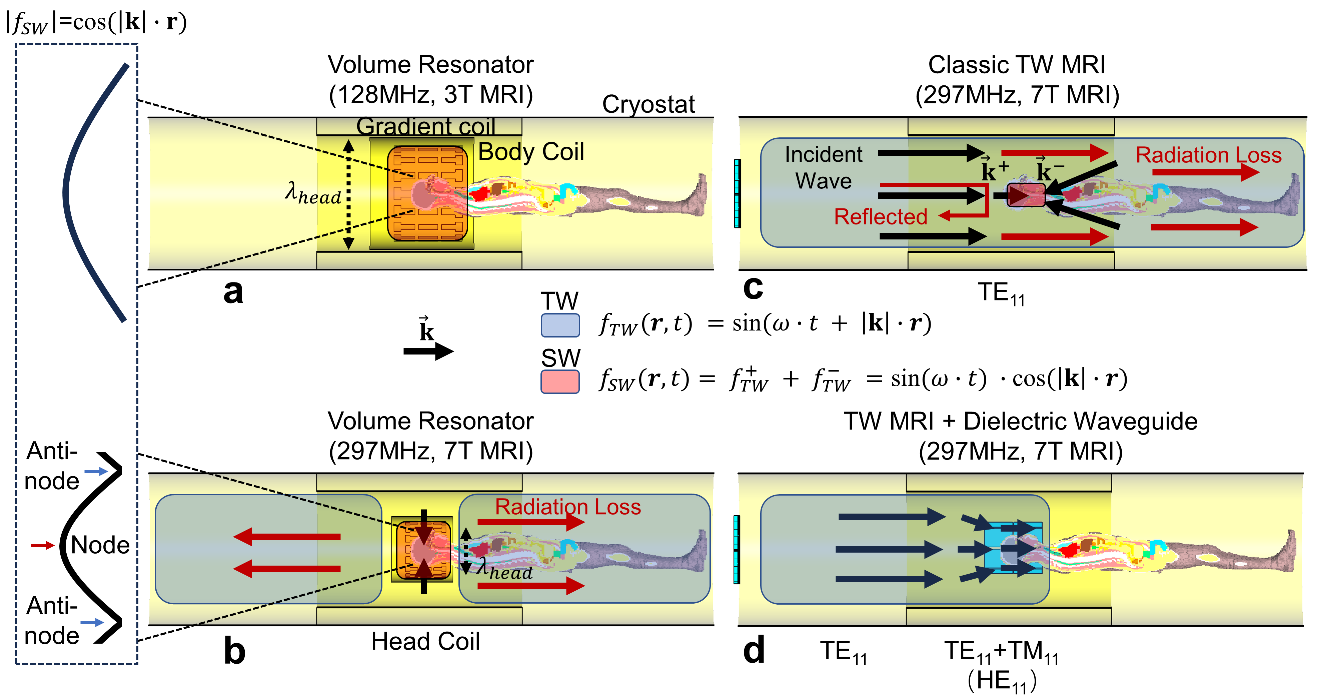Xiaotong Zhang’s group published in Nature Communications on UHF MRI
The research team led by Prof. Xiaotong Zhang has recently published a research article titled “Subwavelength Dielectric Waveguide for Efficient Travelling-Wave Magnetic Resonance Imaging” on Nature Communications on March 14. This study proposed a modified Travelling-Wave system using a subwavelength dielectric waveguide insert that enhances both efficiency and homogeneity at 7T MRI.
Uniform excitation of nuclei spins through circular-polarized transverse magnetic component of electromagnetic field is crucial for producing unbiased tissue contrasts in magnetic resonance imaging (MRI), which is especially important for clinical diagnosis. Because of higher working frequency required at ultra-high field (UHF, 7T and above) MRI systems, electrically large human body makes this goal difficult to achieve. Even though travelling-wave system, which is based on MRI-embedded waveguide, has shown potential in large-coverage excitation, the low efficiency in power transmission makes it impractical to clinical or research use. In this study, Xiaotong Zhang’s group presented an approach to simultaneously enhance homogeneity and power transmission efficiency through structuring a subwavelength dielectric waveguide insert. Principles of manipulating wave behaviors including, i.e., TE11-to-TM11 mode conversion, power focusing, wave impedance match, and phase velocity match, have been investigated to explore the potential of a well-controlled TW excitation system in addressing challenges of transmit efficiency as well as homogeneity (see in Fig. 1d).

Fig 1. The schematic of transmit systems in 3T and 7T MRI
With advantages in transverse magnetic field enhancement and maximized power transmission, the TW MRI efficiency in producing was improved by 114% over the entire human brain compared to classic TW method. Through phase velocity matched TW excitation, inhomogeneity was reduced by 21.9% compared to the birdcage resonator. Such benefits were also validated through MRI experiments with both quantitative mapping and anatomical imaging on a commercial 7T human MRI scanner. The well-known center-brightening phenomenon has been effectively inhibited. This fundamental advancement in TW MRI through effective wave manipulation could promote the electromagnetic design of UHF MRI systems.
Dr. Xiaotong Zhang is the corresponding author, and Dr. Yang Gao is the first author and co-corresponding author of the paper. This work was supported in part by STI 2030 - Major Projects, National Natural Science Foundation of China and Zhejiang Provincial Natural Science Foundation of China, etc.
Link of the article: https://www.nature.com/articles/s41467-024-46638-5







